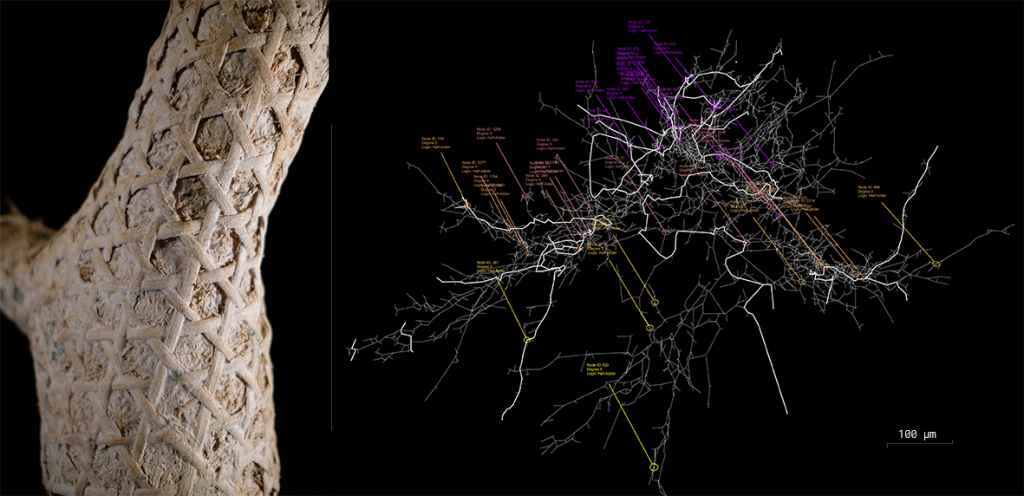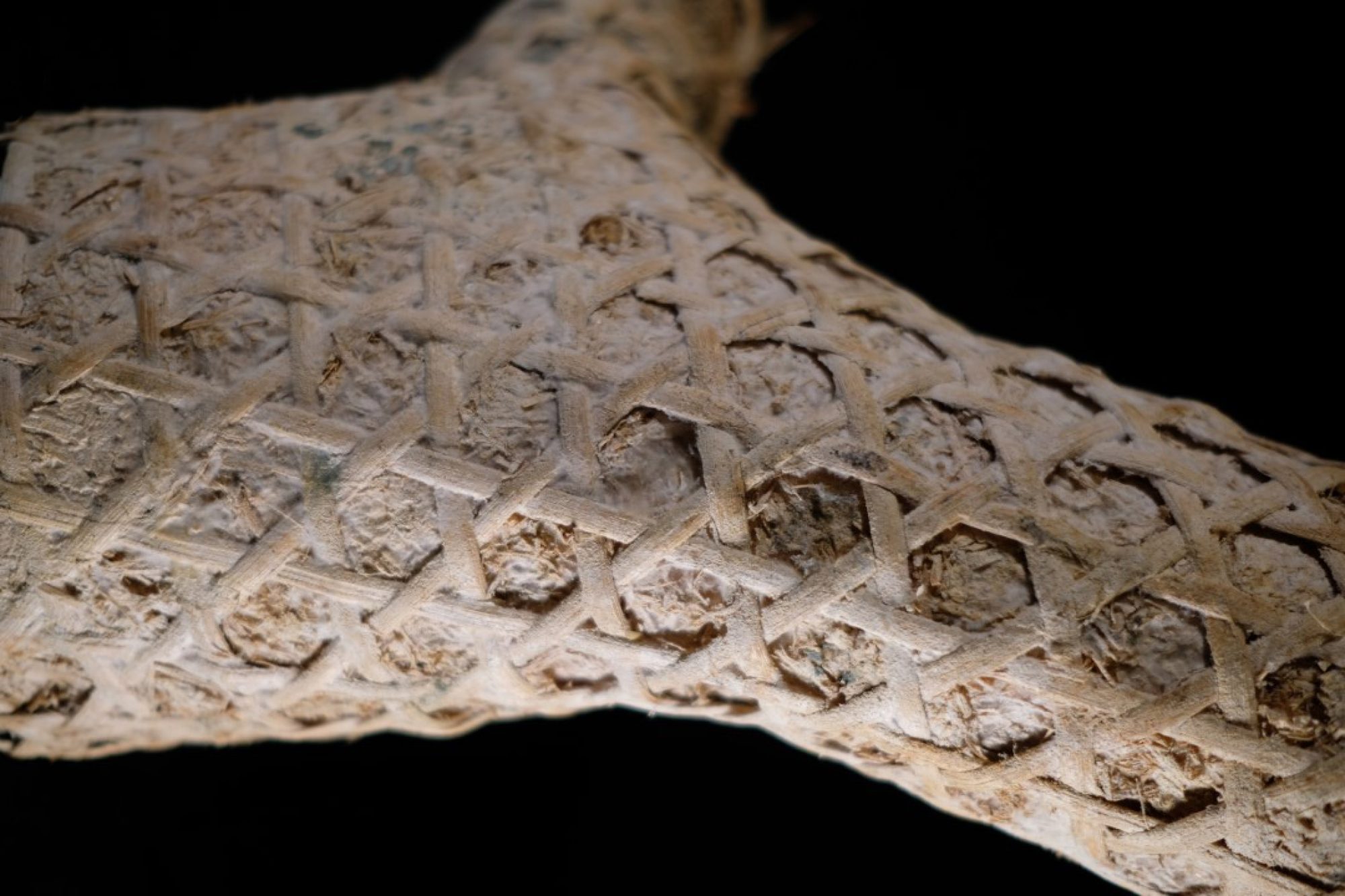
Against a context of resource depletion, resource scarcity and projections of a surging increase in material demand over the coming decades, fungal materials offer a promising realm for expanding our material base. In this rapidly developing field, research has predominantly focused on the protocols of production and properties of denatured fungal materials. This remains a rich field of investigation with many emerging perspectives that promise to enhance and expand potentials for application.
In addition, new research perspectives are enriching the field of fungal materials by drawing upon understandings of the role fungi have played in the shaping and maintenance of Earth’s ecosystems; the roles they play as regulating networks for interspecies communication within forests; and of the fact that fungi demonstrate a high degree of proto-intelligence and show evidence of long-distance communication within their extended bodies, including decision making. This nascent research territory is predicated on working with and maintaining the living organism, with early studies focusing on the sensorial physiology of fungi and the analysis of the computational potential of mycelium networks.
In this Special Issue, we seek to bring together current research trajectories, with the anticipation that this can stimulate cross-over and the further enrichment of the field by exposing interfaces and methods for linking these efforts. We invite biologists, mycologists, material scientists, computer scientists, engineers, architects, physicists, and those from other disciplines to present results of their research within the field of fungal materials.
This Special Issue will open new horizons and research perspectives relevant to bio-fabrication and provide a body of insight that can spur developments in the design and synthesis of intelligent fungal architectures.
Topics considered include but are not limited to:
- Chemical, mechanical and optical sensing of fungi;
- Communication and information transfer in fungal networks and ecosystems;
- Fabrication of pure mycelium materials and mycelium-bound composites and their applications;
- Construction approaches for large-scale structures;
- Functional grading and tuning of properties in mycelium-bound composites;
- Modelling and simulation of fungal dynamics and/or fungal materials;
- Methodologies for characterizing living fungal materials;
- Enhancing the durability of fungal materials;
- LCA of fungal materials.
This special issue is guest edited by:
Prof. Andrew Adamatzky
Guest Editor
Unconventional Computing Lab, Department of Computer Science and Creative Technology, University of the West of England, Bristol BS16 1QY, UK
Interests: unconventional computing; fungal computing; reaction-diffusion computing; cellular automata; physarum computing; massive parallel computation; applied mathematics; collective intelligence and robotics
Prof. Dr. Han A.B. Wösten
Guest Editor
Microbiology, Department of Biology, Utrecht University, Utrecht, The Netherlands
Interests: mushroom formation; fungal materials; fungal cell factories; fungal
Prof. Phil Ayres
Guest Editor
Centre for IT and Architecture, IBT, Royal Danish Academy, Copenhagen, Denmark
Interests: bio-hybrid architecture; living architecture; integrated design; computational design; bio-fabrication; kagome weaving
For more details on submission requirements, follow this link

